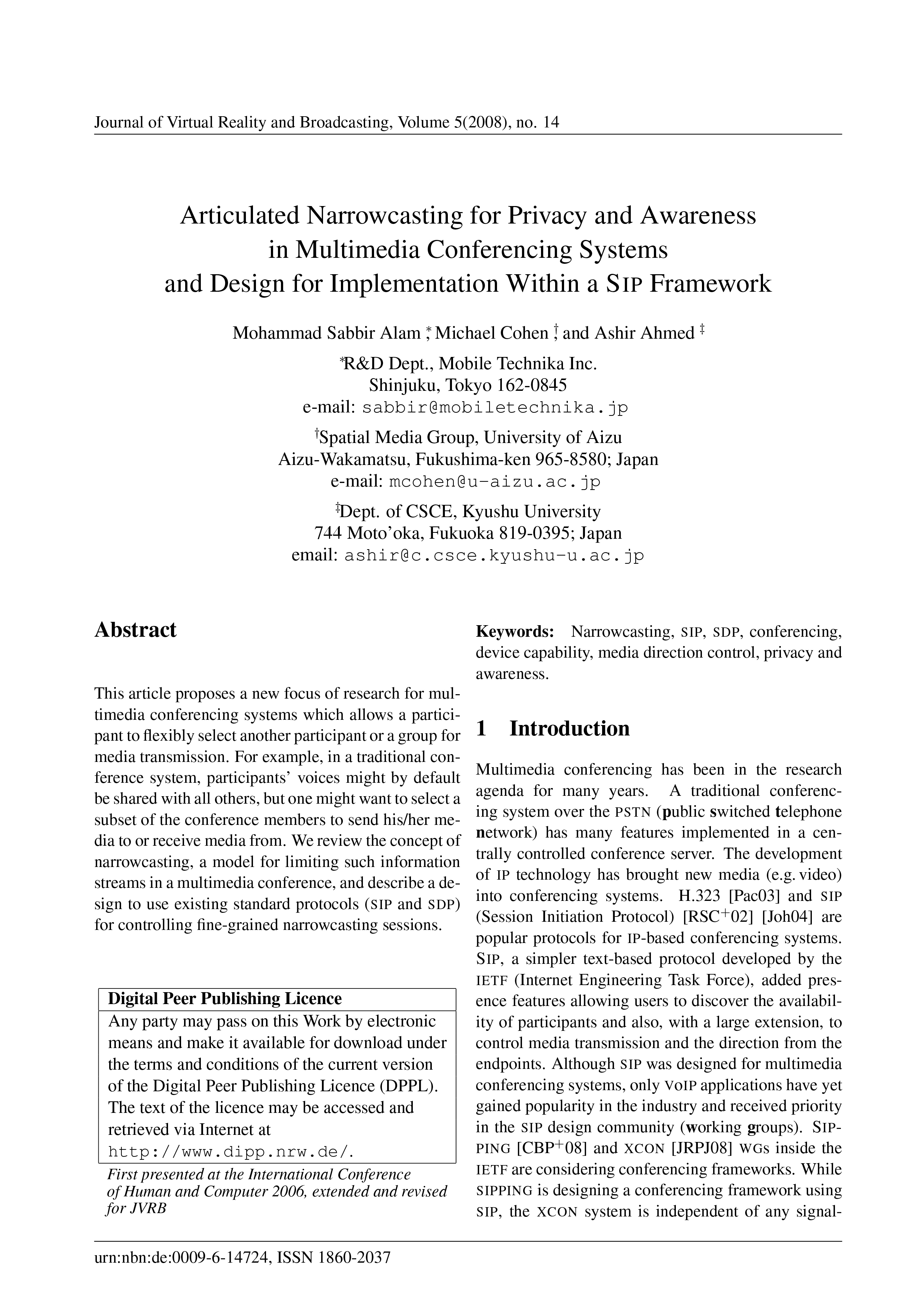Articulated Narrowcasting for Privacy and Awareness in Multimedia Conferencing Systems and Design for Implementation Within a SIP Framework
DOI:
https://doi.org/10.20385/1860-2037/5.2008.14Keywords:
Conferencing, Device Capability, Media Direction Control, Narrowcasting, Privacy and Awareness, SDP, SIPAbstract
This article proposes a new focus of research for multimedia conferencing systems which allows a participant to flexibly select another participant or a group for media transmission. For example, in a traditional conference system, participants voices might by default be shared with all others, but one might want to select a subset of the conference members to send his/her media to or receive media from. We review the concept of narrowcasting, a model for limiting such information streams in a multimedia conference, and describe a design to use existing standard protocols (SIP and SDP) for controlling fine-grained narrowcasting sessions.
Published
2009-01-08
Issue
Section
HC 2006





